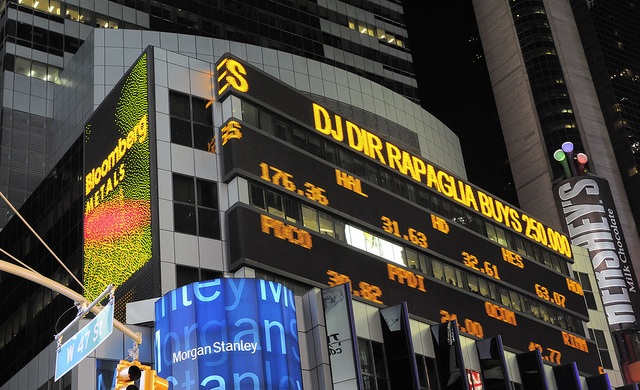I have always been a believer in “the trend is your friend” but on 22nd May I was on my guard when my unique sentiment indicator flashed a warning to the bulls. From that moment I was expecting the second chapter in the chaotic zone I wrote about on 5 April (see: http://uk.advfn.com/newspaper/thierry-laduguie/17815/the-stock-market-enters-the-chaotic-zone) to begin.

This time the weakness looks like it’s for real; Gold is collapsing, 10-year bond yields are rising, mining stocks – that have been at the forefront of the bull market since 2009 – are making new lows. But more importantly the Fed and other Central Banks appear to be living in cloud cuckoo land!
The FTSE 100 is sharply lower today following last night’s drop on Wall Street. The Fed chairman Ben Bernanke said that QE will be scaled back later this year and could end completely by mid 2014. Of course this is on the basis of an economic recovery. But will the economy recover? Despite the enormous amount of stimulus provided over the last five years we continue to see some weakness in economic reports and activity. The global economy is not firing on all cylinders like the Fed and other Central Banks would like to see.
The sharp drop in equity markets this morning has been accentuated by weak economic numbers from China. The China manufacturing PMI came in below expectations, mining and resource stocks are plunging as a result.
If we are at the start of a bear market as I have predicted, there is no way the economy will recover. The stock market is a barometer of social mood, it leads the economy. In a bear market, sentiment is negative, this naturally leads people to become more cautious about spending and investing. Over time this continued action and mindset causes the economy to contract. If I am right about the long term direction of the stock market, expect unemployment to start rising again in the next few months and the economic reports to cause further and deeper disappointment. At the same time expect bond yields to continue to rise as the risk of default increases.
It is impossible to conclude with certainty that the 22nd May high at 6875 marked the end of the bull market, however, based on my indicators and the unfolding Elliott wave pattern, the probability of this happening looks high.
I would advise everyone invested in the markets to prepare for a period of chaos, which will see the stock market failing to respond to good news and hope being replaced by fear and negative sentiment.
Thierry Laduguie is market Strategist at www.bettertrader.co.uk


 Hot Features
Hot Features













